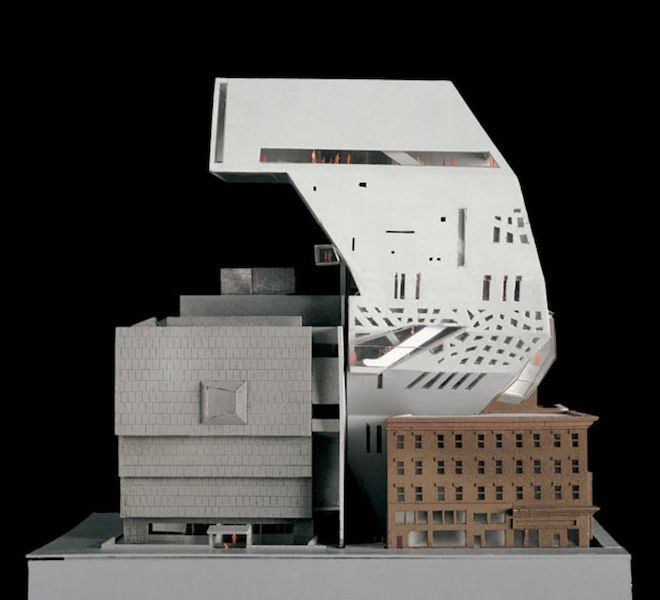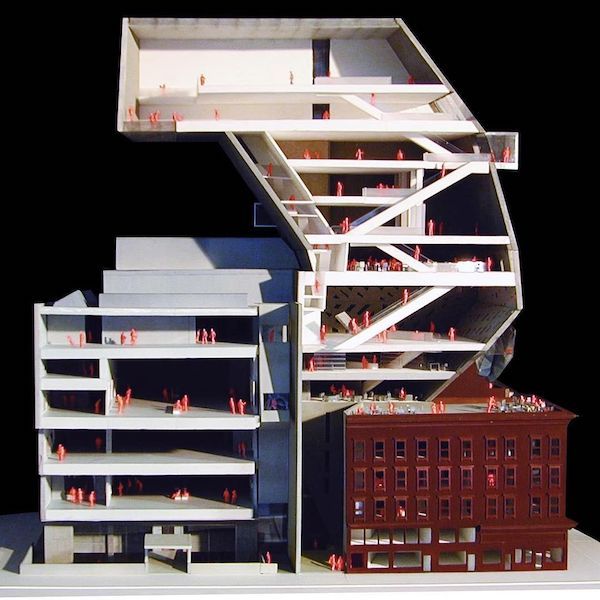

There is a remarkable correlation between the world of contemporary architecture and financial markets, especially in the US, where many public projects also rely in part on private financing. This is not surprising. When the trees seem to grow into the sky there is an overall sense of optimism and a greater appetite for risk, also in terms of aesthetics. Wealthy individuals pledge millions to prestigious projects and project developers have no difficulty financing their projects.
It's also slightly irrational from an economic point of view: one would expect building projects to have a long time window and to be relatively immune to short term down swings. Why call off a project that takes several years to complete when today's markets are down? They could be up by the time the project is completed.
In 2002 when the internet bubble burst a number of interesting projects were cancelled. One of the casualties was OMA. The extension of the Whitney Museum, which would have been one of the most exciting structures in New York, was called off, so was the planned extension of the Los Angeles County Museum of Art.
So, with the recent drop in stock markets and a recession in the US no longer an if but a reality, the future of various projects will yet again be thwarted. The New York Times of March 21, 2008, reports that it is increasingly likely that the Atlantic Yards development in Brooklyn designed by Frank Gehry, will be scrapped due to a lack of funding. I also doubt whether Calatrava’s townhouses in the sky will ever get built.
I’m afraid that many architecture practices will brace themselves for the fall out of the current economic downturn.
Update
Nicolai Ouroussoff, It Was Fun Till the Money Ran Out. The New York Times, December 19, 2008.
Too bad. Jean Nouvel's skyscraper would have been a 21st century landmark.